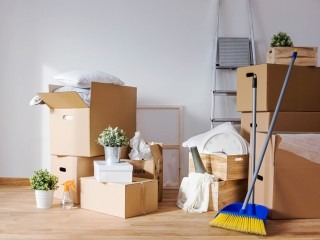
You’ll often hear people comparing the stress of moving house to losing a loved one. If you’ve ever faced the daunting task of deceased estate clearance, you’ll know it’s a time where you experience both these things at once. Losing a loved one is difficult enough, so we’ve put together a guide to help you manage a deceased estate clearance.
Why deceased estate clearance differs from moving house
The process of cleaning out a deceased estate differs from moving house in two ways. First, it’s not your house and the size of the job is unknown until you start. Next, you’ll most likely have to distribute possessions to many different people and organisations.
The other factor that comes into play is who is involved in clearing the estate and what instructions you have in the will. This creates more challenges than moving house, where you are the chief decision maker.
Step one: get everyone organised
If one family member held an Enduring Power of Attorney (commonly known as an EPA), they will likely take charge of the clearance as they were trusted by the deceased to make decisions on their behalf and to act in their best interests.
If no one had an EPA, you’ll need to have a meeting with all the people involved in the clearance to nominate responsibilities and duties. Talk it through before you begin and come to an agreement to avoid disputes. Organise everyone based on their skills, age and availability. If everyone knows their role, the clearance will go much better.
Step two: organise a distribution centre
You’ll probably wonder why we suggest this is a good place to start when faced with clearing an entire house lot. What we mean is clear a room so you have a safe place to store everything so it goes to the right place. Empty a bedroom. Even if you end up with piles clutter, one clear space will make the job go much easier in the long run.
Step three: tackle one job at a time
It’s important to set achievable goals each day. Pick one task and do it. If you complete it early, you can always do another. Don’t forget to rest, hydrate and eat. It’s also easier to clear one room at a time as you’ll create more space for sorting, storing and distributing items.
Step four: starting the process
Whenever we move house, we recommend sorting your belongings into three piles: Items you’ll keep, items for selling or charity, and what you’ll throw away. Clearing a deceased estate works the same way, but there are more considerations than normal.
1. Use the will as your guide
Most wills specify how the deceased wanted to distribute their estate. Collect any items that are named for beneficiaries and store them in your empty room (distribution centre) until they can be shipped or collected. Label items to avoid mistakes.
2. The residue of the estate
Most wills also specify who receives the residue of the estate. The residue is all the items left over after the named items. If the residue is divided among many family members, you’ll need to have an honest discussion about who’ll keep what and come to an agreement.
Once these items have been sorted and taken, you’ll have to assess what remains. Is any of it of value? Can any items be given a new lease on life?
You can offer these items to friends, extended family or people who were close to the deceased. Put these items aside in your spare room for storage if they can’t be taken immediately.
You can also contact second hand dealers or auction houses to sell and ship large quantities of goods. Second hand dealers often take more items that you’d expect. Auctioneers will tell you what items are of value to sell at auction.
3. Give anything else to charity
Phone your local charity shops and ask them if they need anything. Sort these items into boxes and take them to the shop. Some charities will collect if you have a large number of items to donate. Don’t throw away old clothes unless they are too dirty or damaged to wear. Many charities distribute clothes and shoes to people in need.
4. The final tidy up
Deal with whatever remains by recycling anything you can, or take it to the tip for disposal.
5. Some useful tips
Don’t forget to deal with the garage, outside area or the garden shed.
Secure document destruction bins are a great way to dispose of private documents and papers.
Ask for help if you need it.
Be kind to one another.
If we can help to make this process easier for you and your family, please give us a call.








